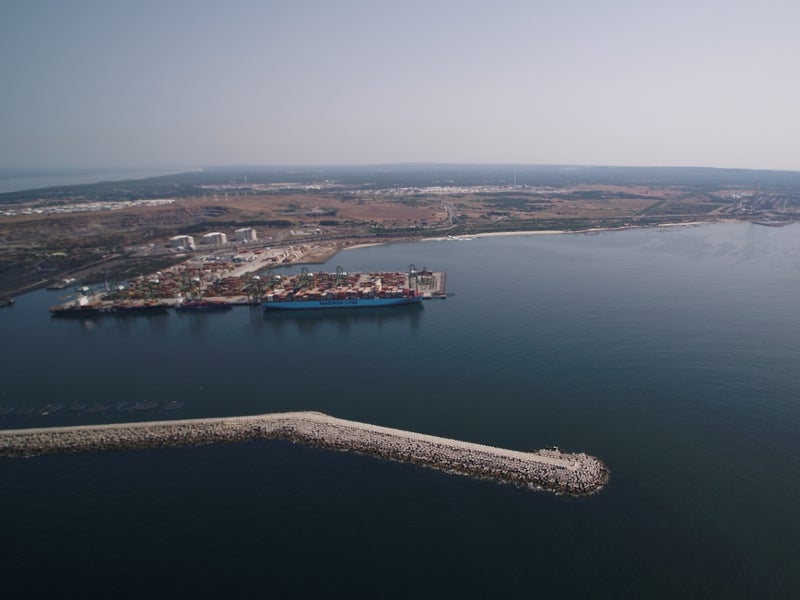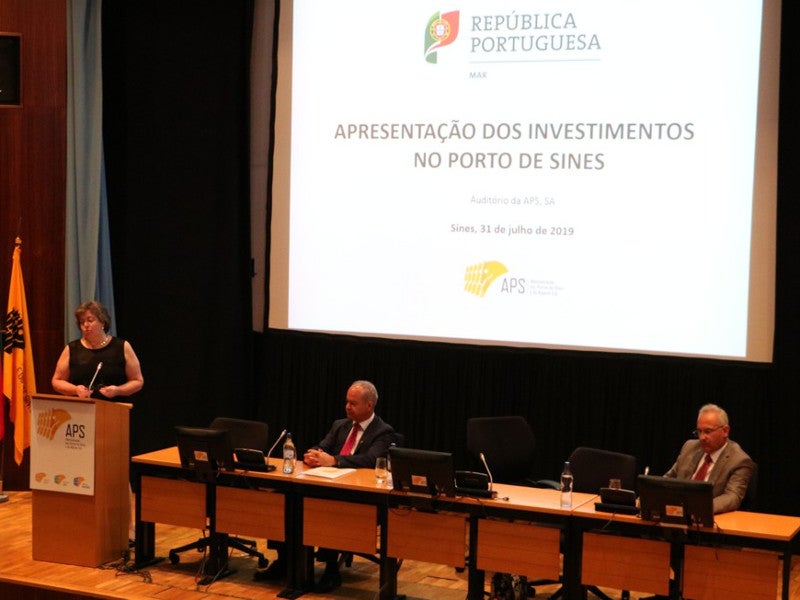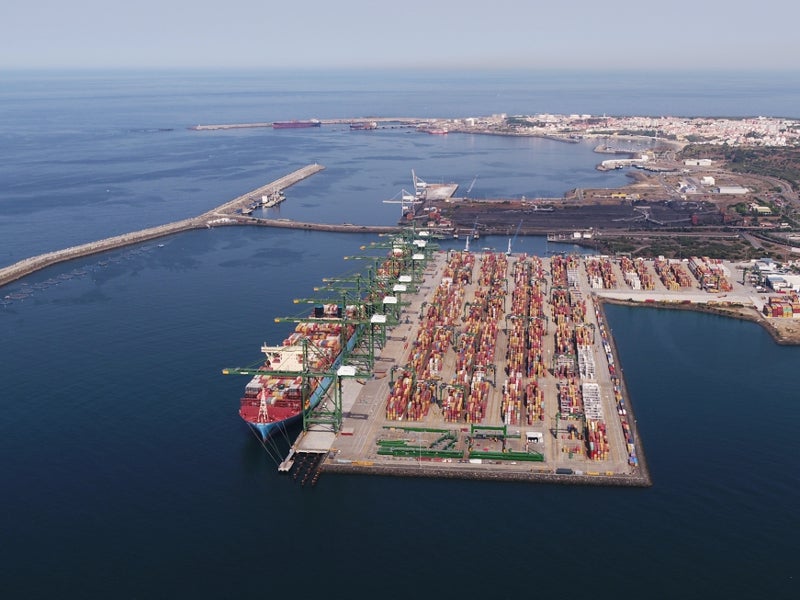Port of Sines is an open deepwater modern seaport located 107km south of Lisbon, Portugal, in the south-eastern part of Europe.
Ports of Sines and Algarve Authority (APS), the project developer, proposed to construct a new container terminal named Vasco da Gama terminal at Port of Sines. The existing XXI terminal will also be expanded as part of the plan, to increase the port’s cargo handling capacity.
The new terminal construction, as well as the terminal XXI expansion proposal, was approved by the Portuguese Government in July 2019.
PSA Sines, the current concessionaire, will fund the expansion project, while investment for the new terminal project will be arranged by the future concessionaire.
Construction of the new Vasco da Gama terminal will commence in 2021 and is expected to be completed in 2024.
Details of the existing infrastructure at Port of Sines
Operational since 1978, the Port of Sines is strategically located to serve as an important hub in the Ibero-Atlantic front. The port handled 47.8 million tonnes of cargo in 2018.
It houses multiple terminals, including a liquid bulk terminal, petrochemical terminal, multi-purpose terminal, TGN terminal, and container terminal, as well as a fishing harbour and a leisure port.
It offers a range of services such as maritime traffic control, navigation, tug and mooring services, handling and storage of cargos, waste reception services, and maritime transport services.
An advanced maritime traffic control system named VTS was recently installed at the port to improve maritime security and surveillance.
The heliport of the port is situated towards the western side of the APS’ jurisdiction area, which also houses final approach and touch (FATO), and parking zone.
Vasco da Gama container terminal details
The new Vasco da Gama container terminal will be capable of handling three million TEUs (standard twenty-foot equivalent units) of cargo a year.
With a storage area of 46ha, the new terminal can accommodate three large ships simultaneously. It will also house a 1.37km-long quay wall, 15 quay gantries, and 17.5m ZH bottoms.
The total estimated investment for the construction of the Vasco da Gama container terminal is €642m ($715m). In addition to creating approximately 1,350 direct jobs, the new container terminal is expected to create an economic impact of €524m ($583m).
Details of the XXI terminal expansion
The expansion of XXI terminal will mainly include quay extension and installation of new handling equipment. It will also include replacement and renewal of the existing equipment.
The expansion project will increase the cargo handling capacity of the terminal from 2.3 million TEUs to 4.1 million TEUs. The storage area will also be increased from 42ha to 60ha, providing berthing for four last-generation container vessels. The €547m ($609m) project is expected to create approximately 900 jobs.
Benefits of new terminal and port expansion
Port of Sines is expected to become one of the main ports in the Western Mediterranean region, as well as in the world, upon completion of the development projects.
The container handling capacity will be increased to seven million TEUs, which will enable the port to attract cargo from customers across the globe.
Other developments at the port
The Council of Ministers approved multiple public investments worth €99m ($110.4m) in July 2019. The investments will allow the port authority to extend the east breakwater by 750m and build a new pilot boat, as well as a freight dispatch centre and pre-gate.
Work will include strengthening of the electricity grid for high voltage and requalification of the railway access of the port.





